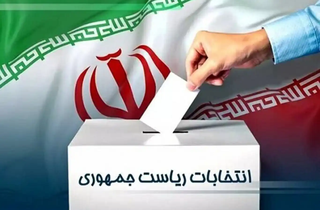Polling stations across Iran opened on Friday morning at 8 am local time, with the Interior Ministry having the option to extend voting hours if necessary.
Supreme Leader Sayyed Ali Khamenei was among the first to cast his ballot at the Imam Khomeini Hussainiyah in Tehran. Speaking to reporters, Khamenei emphasized the importance of voter turnout, calling it a "definite necessity" for the nation.
Over 61.45 million eligible voters can participate in the election, both domestically and internationally. Eligible voters include individuals born on or before June 28, 2006. The country has established approximately 59,000 polling stations, including over 15,000 mobile stations, to facilitate the voting process. Additionally, 340 polling stations in 100 countries are available for Iranian expatriates.
Security for the election is being provided by the police, the Islamic Revolution Guard Corps (IRGC), and Basij forces to ensure a safe and orderly voting process.
The candidates remaining in the race are Saeed Jalili, Mohammad Bagher Qalibaf, Mostafa Pour Mohammadi, and Masoud Pezeshkian. Earlier in the campaign, two candidates withdrew: Alireza Zakani, the current mayor of Tehran, who called for either Qalibaf or Jalili to withdraw to secure a victory for Iran's Revolutionary Front, and Amir-Hossein Ghazizadeh Hashemi, who withdrew on Wednesday.
President Ebrahim Raisi's death necessitated early elections, as mandated by the country's constitution. Raisi's term was marked by significant developments in both domestic and foreign policies, including several accolades and strengthened international partnerships, led by the late Foreign Minister Amir-Abdollahian.
As the election process unfolds, the participation of millions of Iranians, both at home and abroad, will determine the country's next president. The outcome will shape the future direction of Iran's policies and its role on the international stage. (ILKHA)



 Güncel
Güncel
 Güncel
Güncel
 Güncel
Güncel
 Güncel
Güncel
 Güncel
Güncel
 Güncel
Güncel
 Güncel
Güncel
 Güncel
Güncel
 Güncel
Güncel
 Dünya
Dünya





